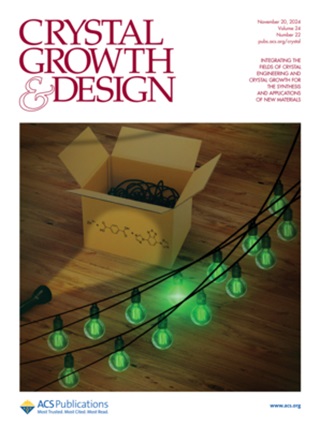Construction of Battery-Like Hierarchical MOF@MXene Heterostructures for Hybrid Supercapacitors
IF 3.4
2区 化学
Q2 CHEMISTRY, MULTIDISCIPLINARY
引用次数: 0
Abstract
Presently, two-dimensional (2D) hybrid metal–organic framework (MOF) heterostructures have drawn much attention in energy-storage areas. Rapid transport and full diffusion of ions could favor the full utilization of active sites, giving 2D MOF heterostructures a robust electrochemical performance. Herein, to optimize ion transport paths and promote ion penetration ability, a block copolymer was used to produce mesopores inside 2D MOF nanosheets, constructing a hierarchically porous MOFs@MXene hybrid. The energy-storage mechanism analysis shows that diffusion-controlled behaviors play a dominant role over surface capacitive behaviors in storing charges of the hierarchical hybrids. The resulting Meso-Cu-Zn-MOFs@Ti3C2Tx delivers a capacity of 61.8 mA h g–1 (404 F g–1) at 0.2 A g–1 and a good rate capacity (53 and 44.4 mA h g–1 at 1 and 5 A g–1, respectively). Furthermore, an assembled Meso-Cu-Zn-MOF@Ti3C2Tx//AC hybrid device exhibits an energy density of 35.6 W h kg–1 at a power density of 425.8 W kg–1 (0.5 A g–1) and a power density of 4.25 kW kg–1 at an energy density of 27.1 W h kg–1 (5 A g–1).

为混合超级电容器构建类似电池的分层 MOF@MXene 异质结构
目前,二维(2D)混合金属有机框架(MOF)异质结构在储能领域备受关注。离子的快速传输和充分扩散有利于活性位点的充分利用,从而使二维 MOF 异质结构具有强大的电化学性能。为了优化离子传输路径,提高离子渗透能力,本文利用嵌段共聚物在二维MOF纳米片内部产生介孔,构建了分层多孔的MOFs@MXene杂化物。储能机理分析表明,在分层杂化物的电荷存储过程中,扩散控制行为比表面电容行为起主导作用。由此产生的 Meso-Cu-Zn-MOFs@Ti3C2Tx 在 0.2 A g-1 时可提供 61.8 mA h g-1 (404 F g-1)的容量,并具有良好的速率容量(1 A g-1 和 5 A g-1 时分别为 53 和 44.4 mA h g-1)。此外,组装好的中铜锌-MOF@Ti3C2Tx//AC 混合器件在功率密度为 425.8 W kg-1 (0.5 A g-1)时的能量密度为 35.6 W h kg-1,在能量密度为 27.1 W h kg-1 (5 A g-1)时的功率密度为 4.25 kW kg-1。
本文章由计算机程序翻译,如有差异,请以英文原文为准。
求助全文
约1分钟内获得全文
求助全文
来源期刊

Crystal Growth & Design
化学-材料科学:综合
CiteScore
6.30
自引率
10.50%
发文量
650
审稿时长
1.9 months
期刊介绍:
The aim of Crystal Growth & Design is to stimulate crossfertilization of knowledge among scientists and engineers working in the fields of crystal growth, crystal engineering, and the industrial application of crystalline materials.
Crystal Growth & Design publishes theoretical and experimental studies of the physical, chemical, and biological phenomena and processes related to the design, growth, and application of crystalline materials. Synergistic approaches originating from different disciplines and technologies and integrating the fields of crystal growth, crystal engineering, intermolecular interactions, and industrial application are encouraged.
 求助内容:
求助内容: 应助结果提醒方式:
应助结果提醒方式:


